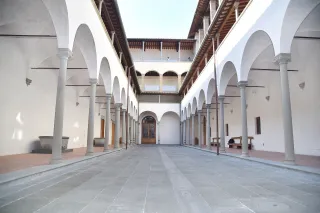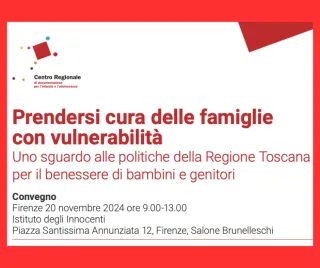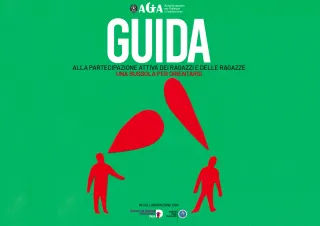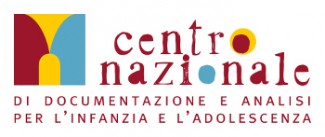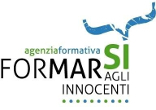Educazione Zerosei (Education 0-6) The Institute's Report at the Centre of the COnference in Milan
The cycle of travelling seminars in the municipalities involved in monitoring the supply of crèches in Italy continues, Objective: To stimulate public reflection on the development of the integrated 0-6 system.
31 October 2022
Area di attività
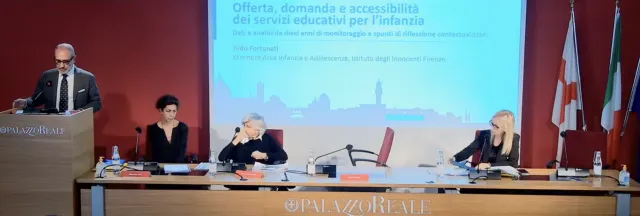
L'intervento di Aldo Fortunati, direttore Area Infanzia e Adolescenza dell'Istituto al convegno "Educazione Zerosei. Diritti e qualità, e accessibilità del sistema integrato"
Almost like two parallel lines. On one of them, there is the pre-school: generalised, free, widespread throughout the peninsula, with coverage rates close to 100%. On the other, there is the crèche where fees are charged, where only one child in four has access to the service and where in recent years there has been an increase in drop-outs (16%), resignations (7%) and irregularities in the payment of fees (15%) as well as an increase in the already marked territorial disparities. In the middle, there is Legislative Decree no. 65/2017 whereby 0-6 is a right for all girls and boys and is the first segment of education and training. This is one of the photographs taken by Educazione Zerosei. Rights, quality and accessibility in the integrated system, the latest monitoring report to measure the quality and accessibility of the supply of crèches in Italy, a survey conducted by the Istituto degli Innocenti based on a sample of 50 Italian municipalities in which more than a fifth of children under 2 years of age (21%) live. The survey is published in the volume that launched the new Infanzia e Adolescenza agli Innocenti series.
The Milan Conference and the Cycle of Travelling Seminars
The survey arrived in Milan, the largest municipality involved in the monitoring, at the conference ‘Education Zerosei: integrated system and pedagogical innovation’, organised by the Milan municipal administration in collaboration with the Institute. The survey had been previously discussed in Verona, Rome and Naples. In the coming months it will be presented in Bologna, Trieste, Ancona, Taranto and Sassari, before returning to Florence for a further public reflection at an event planned for next spring. A true cycle of travelling study seminars where the Institute's monitoring report will touch upon the municipalities involved in monitoring. An initiative that has been strongly supported by the Institute to stimulate debate and public reflection on the development of the integrated 0-6 system at a time characterised by tensions, stimuli and opportunities.
Population Decline and the NRRP: Paradoxes and Opportunities for the Zerosei System
In Milan, the Director of the Institute’s Childhood and Adolescence Area, Aldo Fortunati, outlined the overall picture in his speech during the plenary session. On the one hand, there is the paradox of the demographic decline, which has led to a growth in the coverage rate of crèches (from 20 to 25%) despite the absence of a quantitative and qualitative increase in supply: "Quite simply," he explained, "the number of places has remained the same and the children have decreased; therefore, the indicator has gone up”. In pre-schools, however, things have been different: here, the birth rate crisis (with the number of children under the age of six dropping from 1.6 to 1.4 million in less than ten years) has led to the closure of 1,707 schools and 5,851 classes, while the average number of pupils per section has dropped from 23 to 17. A haemorrhage of service that could have been an opportunity to expand the supply of crèches, “if an organic plan had been drawn up to increase the number of crèches using those very buildings, it would have also responded to educational trends, and not just the need to reconcile work and family for many parents: suffice it to say that for children under one year of age, applications for enrolment were higher than the number of places available,” Fortunati stressed. A definite opportunity, on the other hand, is the NRRP, which provides for 3.7 billion in investments in Zerosei. Even here, however, there is no shortage of paradoxes: if all the planned places were to be made available, at the end of 2026, there would be 1.4 million of them for about 1.2 million children between the ages of 3 and 6. The impact, on the other hand, could be more effective in crèches where 176,000 new places would be offered: if this happened, Italy would finally exceed the 40% coverage rate. There remains, however, a problem to be solved concerning the municipal solidarity fund, managed by the Ministry of the Interior: it is the one covering operating expenses. There are no definite figures yet, but the feeling is that the resources might not be sufficient: “Too much money on investments and not enough for ongoing management,” summarised Fortunati.
State Funding Coordinated by the Centre for a Balanced Distribution of Opportunities
Pre-schools and crèches continue to follow two parallel paths, also in terms of the way they are financed: for the former, with coverage rates close to 100%, public funds are fundamental. State funding also contributes to State-recognised private schools, although there is no lack of other financing by the municipalities and, for State-recognised private schools, by families. In crèches, where the coverage rate stops at 25%, costs are mainly covered by the municipalities for public and approved services, and by families for private non-accredited ones. Conclusion: "It is quite clear," explained the Director of the Institute's Childhood and Adolescence area, "that the spread and increase in opportunities derives directly from the presence of the public sector as funder of the system, and that only a coordinated and central intervention can promote a balanced distribution of opportunities. Work on making the entire Zerosei system free should not be forgotten: it costs much less than people think and is the only way to affirm the right to education for all”.
Bottega dei Ragazzi (The Children’s Workshop), Polo 0-6 Innocenti (the Innocenti’s 0-6 Centre) and researchers from the Institute play a leading role in the working groups
Many insights were discussed and developed by the five afternoon panels, again with input from the Institute. In the first, on 'Educational continuity and the 0-6 curriculum', the debate focused on the experience of the 'Polo 0-6 Innocenti: an integrated and shared curriculum with families' (rapporteur Cristina Gabbiani). In the second, dedicated to ‘Educational spaces and territory’, Institute researchers Giovanni Fumagalli and Arianna Pucci spoke on 'The infant-toddler centre to experience continuity and strengthen the offer for the younger children'. ‘Inclusive strategies in crèches and pre-schools for children with disabilities’ was, on the other hand, the contribution made by Maurizio Parente, Head of Training of the Innocenti Childhood and Adolescence area, to the third panel on ‘Strategies for inclusion’. Finally, the Bottega dei Ragazzi (rapporteur Antonella Schena) was the focus of the fourth panel on 'Services for children between inside and outside' whereas Fernaz Farahi, an Institute researcher, spoke on 'Media education zerosei: a digital workshop to train educational and teaching staff' in the panel on 'Childhood and the digital world'.
Last update: 02/17/2023 - 16:05


